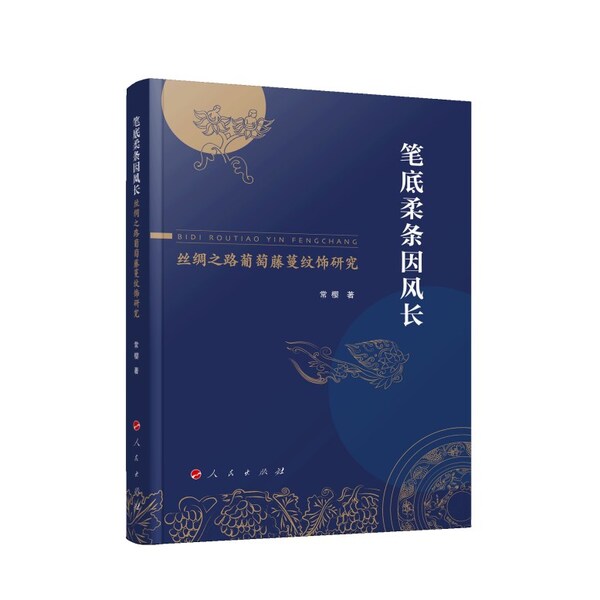Ancient Roman ornament in the book 'Study of Grapevine Ornament on the Silk Road'.
Fri, 17 Jan 2025 10:48:00 +0800
SHIJIAZHUANG, China, Jan. 17, 2025 /PRNewswire/ -- A news report from Great Wall New Media -- The Silk Road is an important bridge for the exchange and mutual understanding between the civilizations of the East and the West, leaving a rich artistic heritage along the route. 'Study of Grapevine Ornament on the Silk Road', published by the People's Publishing House and written by Professor Chang Ying, weaves a cultural ribbon from the Mediterranean Sea to China through the specific and special ornament of 'grapevine'. The impressive chapter exploring the naturalistic style of grapevine decoration in the Roman period is one of the most innovative scholarly perspectives on Roman decoration available.
The book's discussion of the Roman grapevine ornament mainly focuses on two points, one is the connotation of meaning, and the other is the form and style. In terms of connotation, grapevine in the Roman funeral culture has a special meaning, symbolizing abundance, continuity of life and rebirth and protection associated with Dionysus, the god of wine, and these deeper meanings make grape vines popular in funeral and ritual objects.
In terms of form, the book provides a compendium of Roman naturalistic botanical ornamentation represented by grape leaves. It proposes that naturalistic decoration originates from the change of craft technology, and different crafts are good at expressing different decorative styles. And the naturalistic decorative form of a vivid and interesting expression: 'the craftsmen of the time to nature as a teacher, they found that, want to express the natural sense of leaf ornament, not only as far as possible to carve out the details, but also to show the leaves out of the surface of the undulation of the sense of the leaf, such as the leaf after the absorption of water, and then by the sun exposed to the irregular curvature of the presentation.' In addition, the book also shows the application of the grapevines in crafts made of different materials, such as pottery, metal ware, stone carving, etc. It analyses the grapevines in depth from the dimensions of craft technology, cultural symbols, artistic style, etc., and reveals the diversity and complexity of the vine ornaments in different historical periods and cultural backgrounds, which enriches and deepens the cognition of the characteristics and evolution of Roman decorative arts.
The book places the study of the Roman vine motifs in a broader context of cultural exchange, focusing not only on Rome itself, but also on cultural interchange in the Levant, Etruria, North Africa, the Arabian Peninsula, and other regions. Through the cross-cultural comparative study of the grapevine pattern, it provides new contents and perspectives for the study of Roman art, and provides empirical materials for an in-depth discussion of ancient cultural exchanges.
In conclusion, the book 'Study of Grapevine Ornament on the Silk Road' reveals the exchange between ancient Eurasian civilizations through specific examples. It helps to enhance the mutual understanding and recognition between different cultures, lays the foundation of 'common memory' for the cultural exchange and cooperation on the Silk Road, and provides academic support for the promotion of cultural cooperation among countries along the Silk Road.
(By Yang Jie, Professor at Communication University of China)
 Homepage
Homepage
